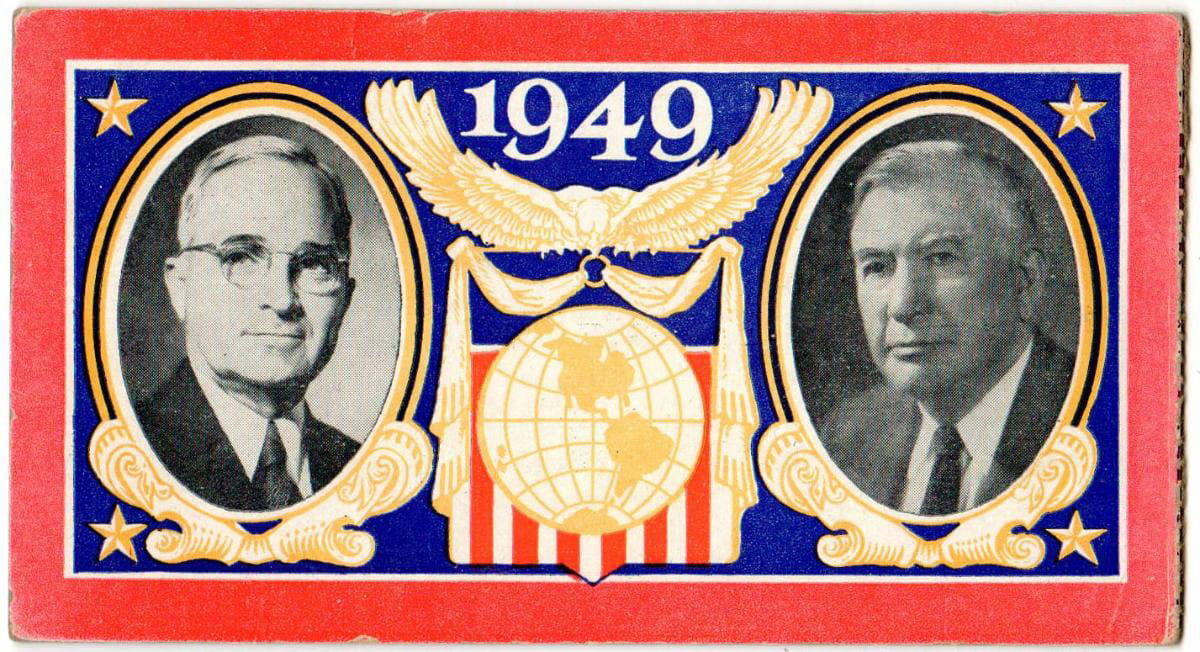By Baosheng Guo, B.A. ‘25, International Affairs
Liza Malinsky, B.A. ‘24, Business Innovation and Entrepreneurship
Michael Garcia, B.A. ‘24, Spanish Literature and Language
The second inauguration of President Harry S. Truman — and first for Vice President Alben Barkley — was held on Thursday, January 20, 1949, at the U.S. Capitol’s East Portico in Washington, D.C. Presidential memorabilia, including a parade ticket for the event, forms part of the Albert H. Small Washingtoniana Collection. Comprising various prints, maps, documents, photographs, and ephemera, the collection illuminates the creation and development of the nation’s capital.
Access to the 41st presidential inauguration was restricted to ticket holders. Attendees celebrated the second — and only complete — presidential term of Truman, who assumed the role after President Franklin D. Roosevelt’s death on April 12, 1945. (It would also be Barkley’s only term as vice president.) The inauguration was the first to be televised and accompanied by an air parade, as well as the first to hold an inaugural ball since the 1920s.

Truman’s inauguration reflected the recent Allied victory in World War II and the beginning of the Cold War with the Soviet Union. The celebratory events featured hundreds of war planes flying overhead and armed soldiers marching in the streets, demonstrating victory, confidence, and prosperity. Truman referred to communism as the “false prophecy” in his address, reinforcing contemporary views of the ideology’s threat to the United States. He outlined four major courses of action to navigate World War II’s aftermath while addressing public concern for democracy’s growing ideological opponent.
The front of the parade ticket includes portraits of President Truman and Vice President Barkley, the year 1949, and a map of the Western hemisphere. The back of the ticket has a crimson border dotted with white stars, and reads, “Inauguration of the President and Vice President of the United States of America, Washington, D.C., January 20, 1949, Admit One, Tax $10.00 Exempt.” The right side identifies the location of the viewing stand.

This post was written by students in Professor Jessica McCaughey’s COMM 3190 class at the George Washington University.
About the Authors
Baosheng Guo is an undergraduate in GW’s Elliott School of International Affairs. He is passionate about American history and politics.
Liza Malinsky is a senior undergraduate at GW pursuing a major in business innovation and entrepreneurship and a minor in communication. She loves learning and bringing seemingly everyday objects to life through storytelling.
Michael Garcia is an undergraduate at GW majoring in Spanish literature and language. He has an affinity for historical texts and artifacts that offer insight into the rich history of Spain and Latin America.
Header image: President Truman inaugural ticket, 1949 (front). Albert H. Small Washingtoniana Collection AS 2018.57.
